1,3-Diphenylguanidine
- CAS NO.:102-06-7
- Empirical Formula: C13H13N3
- Molecular Weight: 211.26
- MDL number: MFCD00001758
- EINECS: 203-002-1
- SAFETY DATA SHEET (SDS)
- Update Date: 2025-12-11 08:41:34
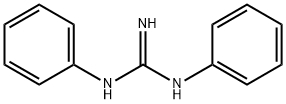
What is 1,3-Diphenylguanidine?
Chemical properties
1,3-diphenylguanidine is a white or cream powder with a slight odour and bitter taste. slightly soluble in water, soluble in ethanol, chloroform, hot benzene, hot toluene, easily soluble in dilute inorganic acids. Used as medium speed accelerator for natural rubber and synthetic rubber, mainly used in the manufacture of tires, rubber plates, rubber shoes and other rubber industrial products.
The Uses of 1,3-Diphenylguanidine
1,3-Diphenylguanidine is used as pharmaceutical intermediate.
The Uses of 1,3-Diphenylguanidine
N,N'-Diphenylguanidine is a primary standard for acids; aeeelerator for the vulcanization of rubber for use with thiazoles and sulfenamides; complexing agent in the deteetion of metals and organie bases.
Background
Diphenylguanidine is a complexing agent used in the detection of metals and organic bases and used as an accelerator in the vulcanization of rubber. It is found in some rubber products. It is also a dermatological sensitizer and allergen.
Sensitivity to diphenylguanidine may be identified with a clinical patch test.
Indications
Diphenylguanidine is approved for use within allergenic epicutaneous patch tests which are indicated for use as an aid in the diagnosis of allergic contact dermatitis (ACD) in persons 6 years of age and older.
Definition
ChEBI: 1,3-diphenylguanidine is guanidine carrying a phenyl substituent on each of the two amino groups. It is used as an accelerator in the rubber industry. It has a role as an allergen.
General Description
White to cream-colored chalky powder. Bitter taste and slight odor.
Air & Water Reactions
Sensitive to moisture. Aqueous solutions are strongly alkaline. Insoluble in water.
Reactivity Profile
1,3-Diphenylguanidine behaves as an amine. Amines are chemical bases. They neutralize acids to form salts plus water. These acid-base reactions are exothermic. The amount of heat that is evolved per mole of amine in a neutralization is largely independent of the strength of the amine as a base. Amines may be incompatible with isocyanates, halogenated organics, peroxides, phenols (acidic), epoxides, anhydrides, and acid halides. Flammable gaseous hydrogen is generated by amines in combination with strong reducing agents, such as hydrides. 1,3-Diphenylguanidine is incompatible with strong oxidizers.
Fire Hazard
1,3-Diphenylguanidine is combustible.
Flammability and Explosibility
Non flammable
Contact allergens
Diphenylguanidine is a rubber sensitizer that can induce immediate-type reactions and delayed-type contact allergy. It was formerly contained in “carba mix.” Occupational exposure concerns finished rubber items and the rubber manufacturing industry. The most frequent occupational categories are metal industry, homemakers, health services and laboratories, and the building industry.
Safety Profile
Poison by ingestion and intraperitoneal routes. Experimental teratogenic and reproductive effects. Mutation data reported. When heated to decomposition it emits toxic fumes of NOx,.
Metabolism
Not Available
Purification Methods
1,3-Diphenylguanidine [102-06-7] M 211.3, m 148o, 10.12. Crystallise it from toluene,
Properties of 1,3-Diphenylguanidine
| Melting point: | 146-148 °C(lit.) |
| Boiling point: | 170°C |
| Density | 1,13 g/cm3 |
| vapor pressure | 0Pa at 25℃ |
| refractive index | 1.6000 (estimate) |
| Flash point: | 170°C |
| storage temp. | Sealed in dry,Store in freezer, under -20°C |
| solubility | Soluble in alcohol, chloroform, hot benzene, hot toluene, and dilute mineral acids |
| form | Powder |
| pka | pK1:10.12 (25°C) |
| color | Pale Cream |
| PH | 10.2 (10g/l, H2O) |
| Odor | wh. powd., bitter taste, sl. odor |
| Water Solubility | slightly soluble |
| Merck | 14,3324 |
| BRN | 1875653 |
| Stability: | Stable. Combustible. Incompatible with strong oxidizing agents. Moisture sensitive. |
| CAS DataBase Reference | 102-06-7(CAS DataBase Reference) |
| NIST Chemistry Reference | Guanidine, n,n'-diphenyl-(102-06-7) |
| EPA Substance Registry System | 1,3-Diphenylguanidine (102-06-7) |
Safety information for 1,3-Diphenylguanidine
| Signal word | Danger |
| Pictogram(s) |
 Skull and Crossbones Acute Toxicity GHS06  Health Hazard GHS08  Environment GHS09 |
| GHS Hazard Statements |
H301:Acute toxicity,oral H315:Skin corrosion/irritation H319:Serious eye damage/eye irritation H335:Specific target organ toxicity, single exposure;Respiratory tract irritation H411:Hazardous to the aquatic environment, long-term hazard |
| Precautionary Statement Codes |
P202:Do not handle until all safety precautions have been read and understood. P261:Avoid breathing dust/fume/gas/mist/vapours/spray. P273:Avoid release to the environment. P301+P310:IF SWALLOWED: Immediately call a POISON CENTER or doctor/physician. P302+P352:IF ON SKIN: wash with plenty of soap and water. P305+P351+P338:IF IN EYES: Rinse cautiously with water for several minutes. Remove contact lenses, if present and easy to do. Continuerinsing. |
Computed Descriptors for 1,3-Diphenylguanidine
| InChIKey | OWRCNXZUPFZXOS-UHFFFAOYSA-N |
1,3-Diphenylguanidine manufacturer
New Products
Indole Methyl Resin tert-butyl 9-methoxy-3-azaspiro[5.5]undecane-3-carboxylate Boc-His(Boc)-OH 2-CTC Resin 4-Chloro-7-tosy1-7Hpyrrolo[2,3-d]pyrimidine 5,7-Dibromo-1H-indole 2,5-dichloro-N-hydroxy-4,6-dimethylpyridine-3-carboximidamide 2,2-Dimethoxy-7-azaspiro[3.5]nonane hydrochloride 4-chloromethyl-5-methyl-1,3-dioxol-2-one (DMDO-Cl) R-2-BENZYLOXY PROPIONIC ACID 1,1’-CARBONYLDIIMIDAZOLE 1,1’-CARBONYLDI (1,2-4 TRIAZOLE) N-METHYL INDAZOLE-3-CARBOXYLIC ACID 4-((2-hydroxyethyl)thio)benzoic acid 1-(TERT-BUTOXYCARBONYL)-2-PYRROLIDINONE Methyl 6-methylnicotinate 3-Pyridineacrylic acid tert-Butyl carbazate TETRAHYDRO-2H-PYRAN-3-OL 2-((4-morpholinophenylamino) (methylthio) methylene) malononitrile 3-(4-morpholinophenylamino)-5-amino-1H-pyrazole-4-carbonitrile 2,4-dihydroxybenzaldehyde 1,3-Diethyl-1,3-Diphenylurea Methyl 2-methylquinoline-6-carboxylateRelated products of tetrahydrofuran
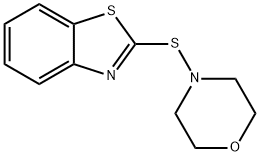
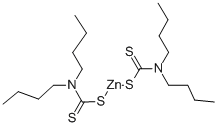
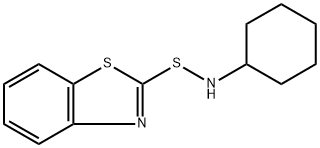

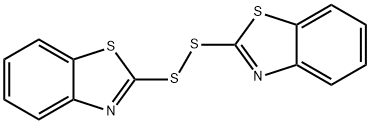
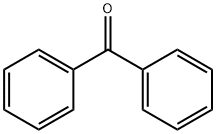


You may like
-
 102-06-7 98%View Details
102-06-7 98%View Details
102-06-7 -
 1,3-Diphenylguanidine, Primary standard CAS 102-06-7View Details
1,3-Diphenylguanidine, Primary standard CAS 102-06-7View Details
102-06-7 -
 1,3-Diphenylguanidine, Primary standard CAS 102-06-7View Details
1,3-Diphenylguanidine, Primary standard CAS 102-06-7View Details
102-06-7 -
 1,3-Diphenylguanidine CAS 102-06-7View Details
1,3-Diphenylguanidine CAS 102-06-7View Details
102-06-7 -
 1,3-Diphenylguanidine CAS 102-06-7View Details
1,3-Diphenylguanidine CAS 102-06-7View Details
102-06-7 -
 Diphenylguanidine CAS 102-06-7View Details
Diphenylguanidine CAS 102-06-7View Details
102-06-7 -
 1,3-Diphenylguanidine CAS 102-06-7View Details
1,3-Diphenylguanidine CAS 102-06-7View Details
102-06-7 -
 1,3-Diphenylguanidine CAS 102-06-7View Details
1,3-Diphenylguanidine CAS 102-06-7View Details
102-06-7
